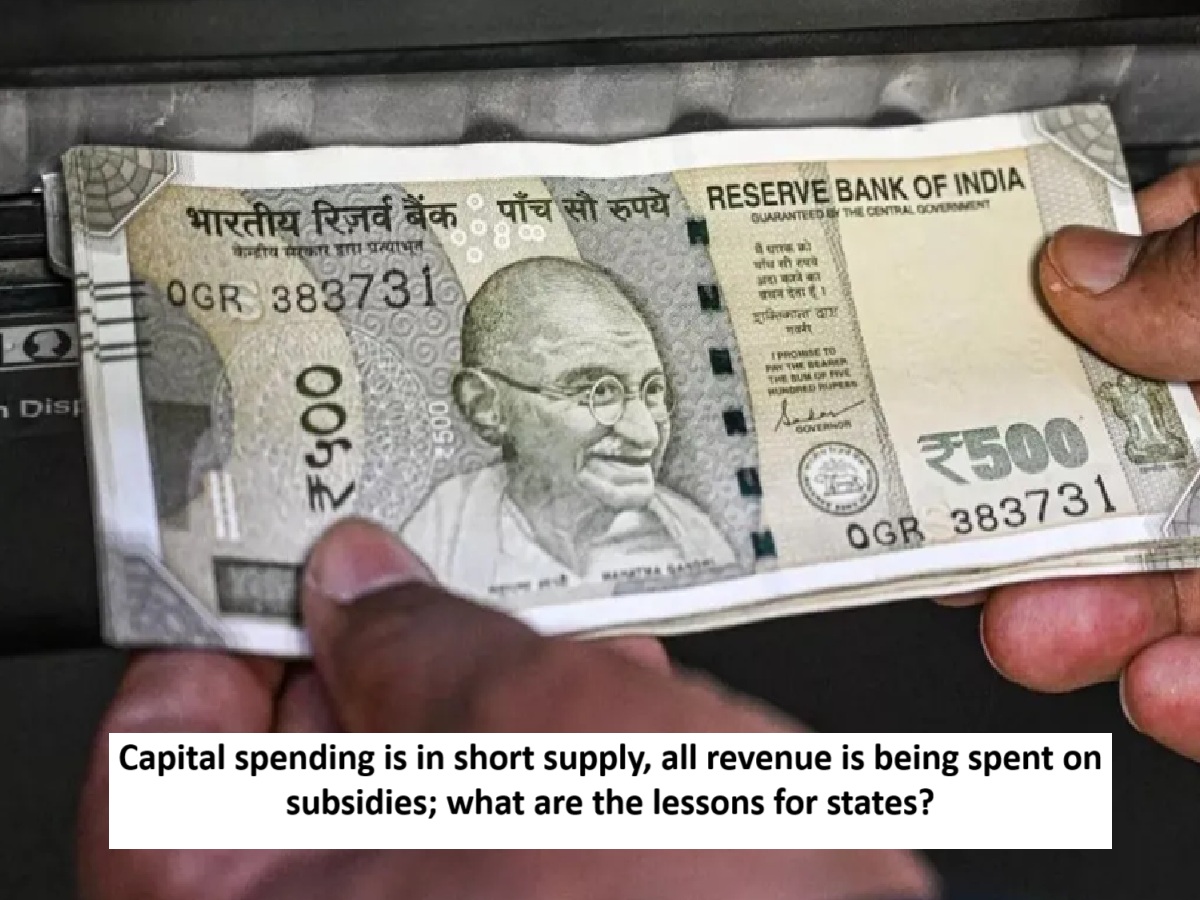
News Topical, Digital Desk : In fiscal year 2023-24, states spent approximately 53 percent of their revenue receipts on salaries and pensions and about 9 percent on subsidies. This is the average expenditure across all states in the country. Thus, approximately 62 percent of state revenue receipts are earmarked for previously committed expenditure.
Without a single school, college, or road being built. Meanwhile, in many states, such as Punjab, 107 percent of revenue receipts are spent on committed expenditure. This means that Punjab's spending on salaries, pensions, interest, and subsidies exceeds total revenue receipts, forcing the state to borrow to meet these costs.
Similarly, Himachal Pradesh spends approximately 85 percent of its revenue receipts on salaries, pension interest, and subsidies. Tamil Nadu spends 77 percent on these items, and Kerala 75 percent. Thus, many states are left with no funds for providing basic amenities. In essence, money comes in and is spent on salaries, pension interest, and subsidies.
The most important point here is that if a state spends one rupee on capital expenditure, such as building roads, it generates an economic output of 2.5 to 3 rupees. However, states simply don't have the money to spend on capital expenditure, and the economic output for each rupee spent on the areas we currently spend is only one rupee. This means that spending on these items is not generating any capital formation.
Capital expenditure adds value to economic output, and states simply don't have the funds for this. The primary reason for this is salaries and pensions. The average state's expenditure on salaries and pensions is approximately 35-40 percent of revenue receipts. Subsidy expenditure is approximately nine percent. There are two or three suggestions to address this. The first is spending on electricity. In many states, power distribution losses are 25 to 30 percent.
This loss is compensated by revenue. If states work to eliminate this loss, they could save 5-10 percent of their revenue receipts. Second, there is the issue of providing subsidies to everyone. For example, states offer 100 units of free electricity to all citizens. Instead of providing subsidies to all citizens, this subsidy should be provided only to those individuals or groups who truly need it or who are financially incapable of affording it.
The third issue is pensions. Instead of implementing the Old Pension Scheme under election pressure, states should implement the Unified Pension Scheme. The Old Pension Scheme is economically unsustainable. States that kept their capital expenditure around three percent of GDP, such as Uttar Pradesh, Gujarat, and Telangana, benefited from this, as when capital expenditure increases, private investment also comes in. This increases GST collections. When capital expenditure decreases, private investment also decreases. Furthermore, states need to improve their project implementation capacity.
Read More: Severe cold wreaks havoc in North India: Dense fog in Delhi-UP, snowfall in Kashmir-Himachal
--Advertisement--

 Share
Share



